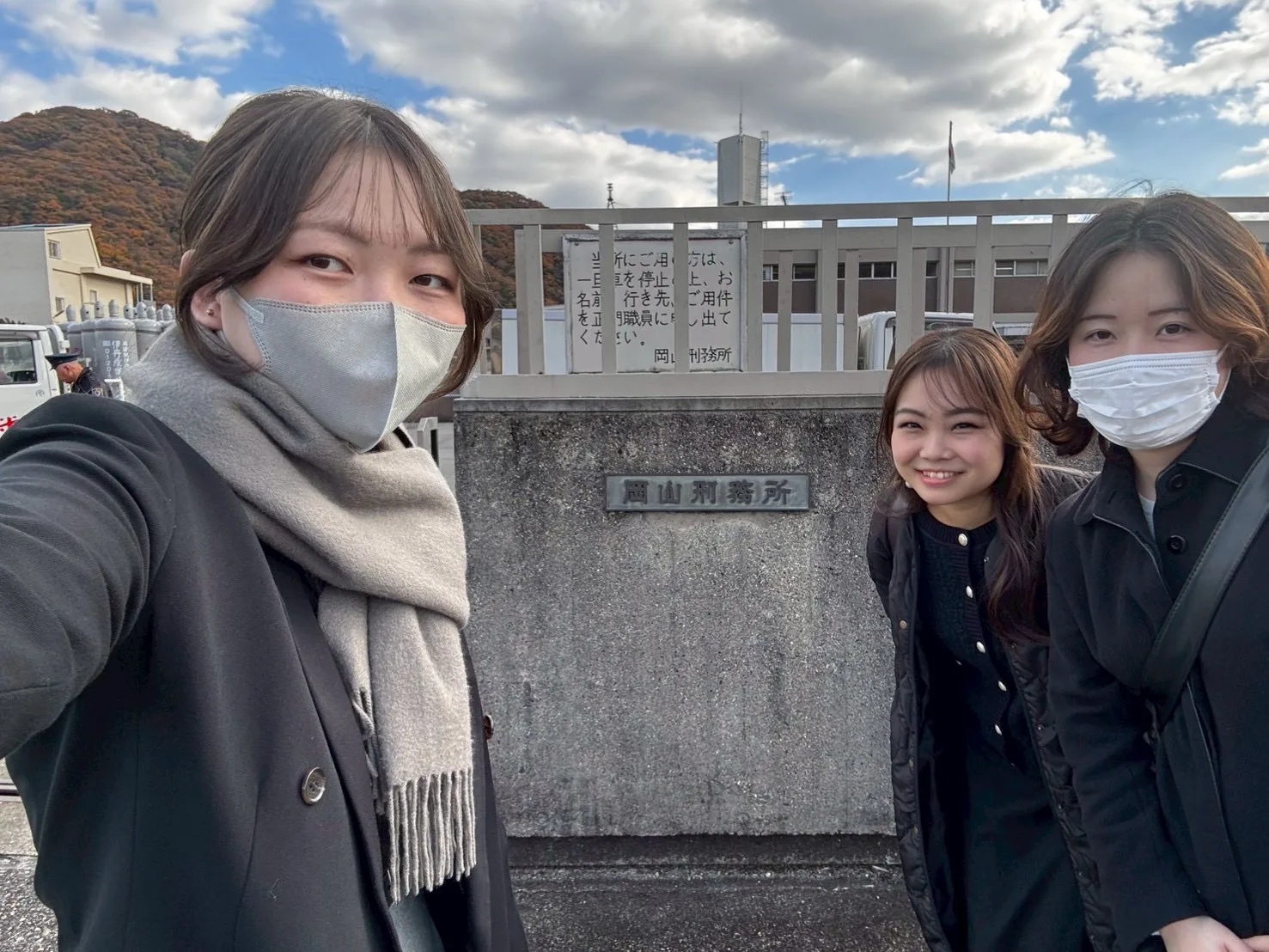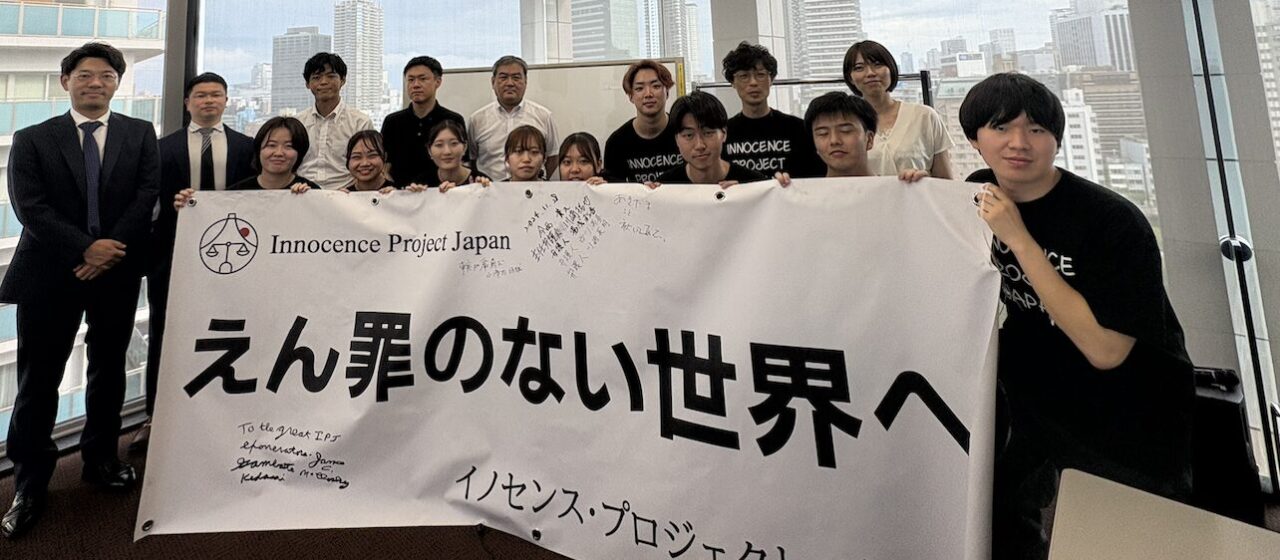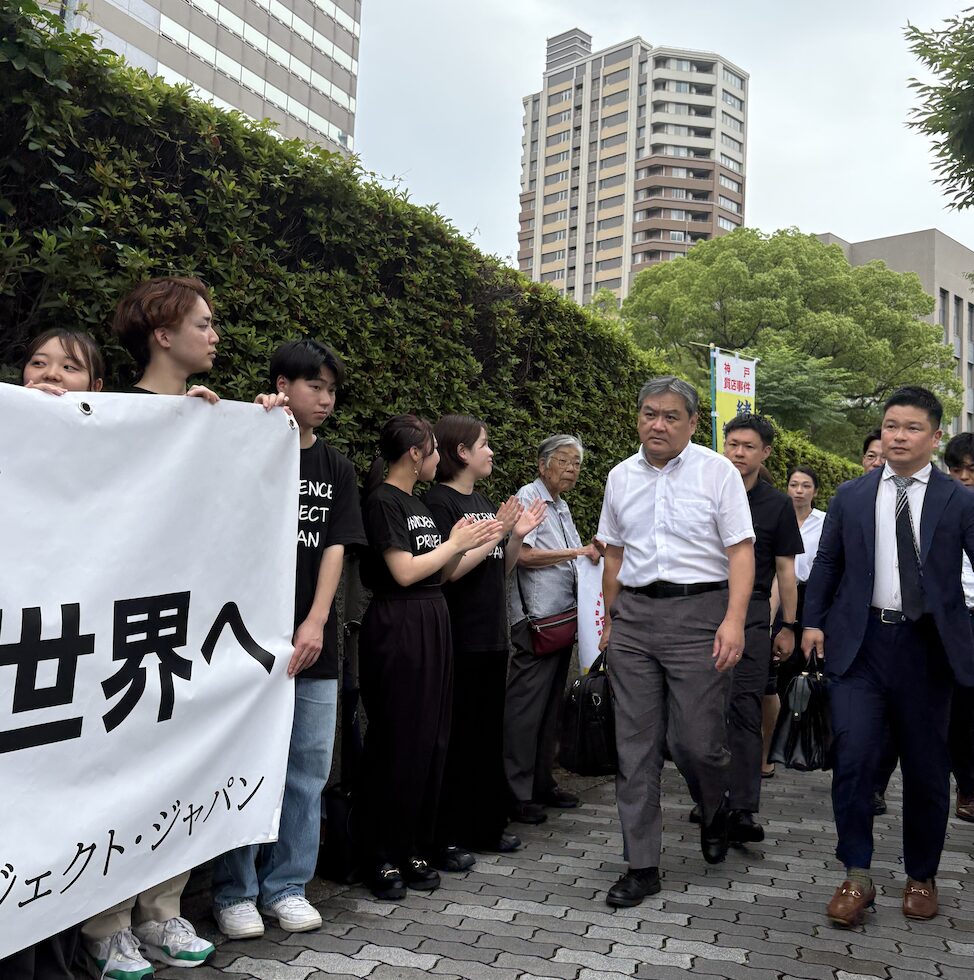
Kobe Pawnshop Case

Kobe Pawnshop Case
What was the Kobe Pawnshop Case?
One day, a false accusation suddenly…
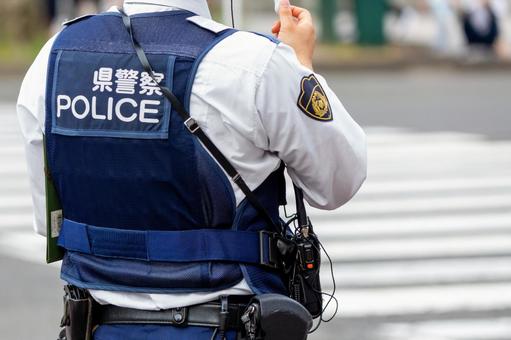
One day, a false accusation suddenly occurred. On August 10, 2007, Hidehiko Ogata was arrested for violating the Road Traffic Act by speeding, and his fingerprints were taken at the police station.
Ogata was then suspected of a different crime. His fingerprints matched those found at the scene of a robbery-murder; and on September 6, 2007, he suddenly was arrested on suspicion of committing the crime.
A false accusation case abruptly began one day.
What is the Kobe Pawnshop Case?

On October 18, 2005, between approximately 6:00 p.m. and 8:30 p.m., a robbery-murder occurred inside a pawnshop in Kobe City. The pawnshop owner was killed by being hit repeatedly over the head, and 10,650 yen in cash was stolen from the victim owner.
The victim was a 66-year-old man who had his left arm amputated above the elbow from an illness when he was younger and had lost his right eye in an accident, giving him a very distinctive appearance. At the time of the incident, the victim was running a pawnshop on the first floor of the building and a tobacco shop next door. When entering the pawnshop, there was a customer service counter in the front. Behind it was the pawnshop’s office space, and further back was the victim’s living space. This space was originally a warehouse for the pawnshop, but the victim had brought in his belongings, such as a bed and chair, into the space and seemed to be sleeping there.
On the morning of the incident, the victim asked his friend M, who had visited the pawnshop, to withdraw 20,000 yen from the victim’s account. After that, the victim had M buy some canned beer, and it appears that the victim spent some time with M in the tobacco shop next to the pawnshop, drinking about five cans of beer. Around 1:30 p.m., the victim went out driving with M. At that time, the victim locked the pawnshop door, and M locked the tobacco shop door. At the victim’s invitation, they went to a restaurant to eat and the two left the restaurant at around 3:20 p.m. M drove the victim back to the pawnshop, and they parted ways at around 3:30 p.m. It is unknown what the victim did after returning to the pawnshop until his body was discovered at around 8:00 a.m. the following day. At around 6:00 p.m. on the day after the incident, the victim’s grandson indicated that he went to the pawnshop on the first floor to pick up some dishes and saw the victim asleep on a bed in the back of the shop with his back to the grandson and his elbows propped up on his shoulders.
After the incident, the police investigated but were unable to find any clues to arrest the culprit, and one year and ten months passed. As previously mentioned, when Ogata’s fingerprints were taken in connection with a different case, they matched those found at the scene of the robbery-murder; and on September 6, 2007, he was arrested on suspicion of the robbery-murder. During the twenty days of his subsequent detention, Ogata maintained his innocence; but on September 26, 2007, he was indicted on charges of robbery-murder.
This is the outline of the Kobe pawnshop incident, in which Ogata was suspected to be the culprit.
神戸地裁では無罪判決

At the first instance hearing at the Kobe District Court, the question of whether Ogata was the culprit in the Kobe Pawnshop Incident came up in dispute. There was no direct evidence that anyone had seen Ogata commit the crime, and the dispute was whether he could be identified as the culprit based on an accumulation of indirect evidence.
The pillars of evidence used by the prosecutors to prove Ogata’s guilt were (1) his shoe prints at the scene of the crime, (2) his fingerprints at the scene of the crime, (3) testimony from an eyewitness who had seen a man appearing to be the culprit, and (4) Ogata’s financial difficulty at the time.
In response, Ogata claimed that he had just happened to stop by to buy cigarettes when the victim called out to him and invited him into the store. They began talking, during which time the victim asked if security cameras could be installed, so Ogata looked around the store. At the time, Ogata was working in a job related to low-voltage equipment, such as the design, construction, and maintenance of telecommunications equipment.
In other words, (1) even if Ogata’s shoe prints were left at the scene of the crime and (2) even if Ogata’s fingerprints were left at the scene of the crime, there would have been nothing unnatural about them being there according to Ogata’s claims. Furthermore, (3) the witness testimony of seeing a man that looked like the culprit was not credible. Regarding (4) Ogata’s financial difficulties at the time, the argument is that someone would commit robbery and murder because they are in need of money, and therefore Ogata, having money problems, was the culprit. However, this leap in logic that someone commits a crime because they have no money, cannot be used as grounds for a guilty verdict.
At the first trial, questioning was conducted of a witness who said he saw someone resembling Ogata near the entrance to the apartment building in which the pawnshop was located at around 8:30 p.m. on the day of the incident. The witness also allegedly saw M, who was said to have been with the victim until around 3:30 p.m. that day.
On June 30, 2008, the Kobe District Court (Judge Okada Makoto, presiding) ruled that Ogata was not guilty.
The court of first instance made an appropriate decision based on the basic principle of “in case of doubt, the benefit of the doubt goes to the defendant.” In a true criminal trial, someone cannot be found guilty based on the mere suspicion that they may be the culprit.
The Osaka High Court reversed the verdict
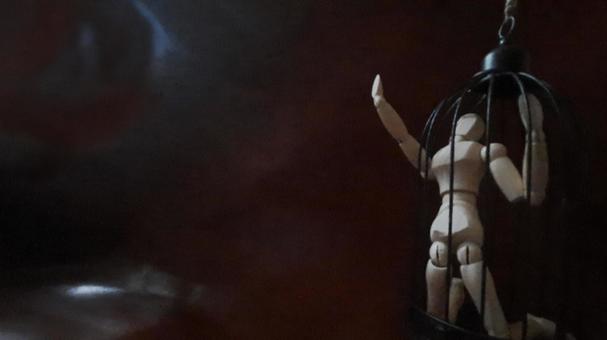
However, on September 24, 2009, the Osaka High Court (Judge Ogura Masazo) overturned the first-instance acquittal and sentenced the defendant to life imprisonment.
In the appellate trial, new witness questioning was conducted of a forensic pathologist and the owner of a nearby electronics store. However, the appellate court’s decision did not use the evidence examined during the appellate trial and instead reevaluated the facts established in the first trial, resulting in a reversal of the guilty verdict.
On the day the verdict was handed down, Ogata went from being free after the acquittal verdict in the first trial, to being under physical restraint and is, as of now, still unable to go outside.
Ogata appealed the ruling of the second trial. However, on December 12, 2011, the appeal was dismissed, and Ogata’s life sentence was finalized.
Problems with the guilty verdict

The appellate court ruling that resulted in a guilty verdict was based on Ogata’s predetermined guilt and found that his claims were not credible.
Since Ogata’s testimony was given a year and ten months after he had visited the victim’s store, it would be natural for him to have some memory discrepancies; however, the appeals court found Ogata’s claims to be unreliable, nitpicking various pitfalls. In the appellate trial, Ogata was not even questioned as a defendant, and the evidence was exactly the same as in the first trial. In spite of that, the court made an unbelievable decision by reaching the completely opposite conclusion.
The following are problems with the facts that the prosecutors based their evidence on and that the appellate court decision recognized:
First, regarding the main evidence of the prosecutor’s case, (1) that Ogata’s shoe prints were left at the crime scene: if Ogata was the culprit, there should have been a trace of blood on his shoes. However, there was no blood found on his shoes, and there were no shoe prints at the crime scene that showed he had stepped in blood. Rather, the shoe prints were in line with Ogata’s claim that he had been looking around the store to see if a security camera could be installed. Also, considering that the store was originally a warehouse, it would not have been surprising if he had entered the living space with his shoes on.
Regarding (2) the fact that Ogata’s fingerprints were left at the crime scene: if he was the culprit of a robbery-murder, his fingerprints should have been found in the places searched. However, there were no fingerprints found at all in the places searched, and there were no fingerprints with bloodstains, which also supports Ogata’s argument. According to Ogata, he touched various places in the store to check whether it was possible to install a security camera, as requested by the victim, which shows that there was nothing unnatural about his fingerprints being left behind.
Furthermore, four cigarette butts believed to be Ogata’s were left at the crime scene, but the court found this fact to be unbelievable, and therefore, not a reason to conclude that Ogata was not the culprit, stating: “it is not necessarily the case that a criminal would be able to act sensibly or rationally at a crime scene, and it is not unthinkable that he would leave evidence at the crime scene.” In the trial court ruling, which resulted in an acquittal, the presence of the cigarette butts with Ogata’s DNA on them was evaluated as being in line with Ogata’s claim thus increasing his credibility.
In addition, the appellate court in its ruling used (3) the testimony of a witness who saw a man looking like the culprit to determine guilt, which was not accepted by the first instance court. In other words, the appellate court gave credence to the witness’ testimony of seeing a person resembling Ogata holding a rod-shaped object of about 60 centimeters around the time of the murder near the entrance of the apartment building where the pawnshop was located and the murder took place. However, a 60-centimeter rod-shaped object was different from the murder weapon, which the forensic pathologist at the appellate trial estimated to be a claw hammer. Furthermore, the features of the man described by the witness did not resemble Ogata, and the witness himself testified that the sketch he had made at the request of the investigator did not resemble the defendant. This testimony was highly problematic for use in determining guilt.
There are countless mistakes in this guilty verdict. In a court of law, a person should not be found guilty unless it is proven beyond a reasonable doubt that he or she is the culprit. A guilty verdict that lacks even the basic principle of “in case of doubt, the benefit of the doubt goes to the defendant” can only be called an incorrect decision.
Request for Retrial – toward an acquittal
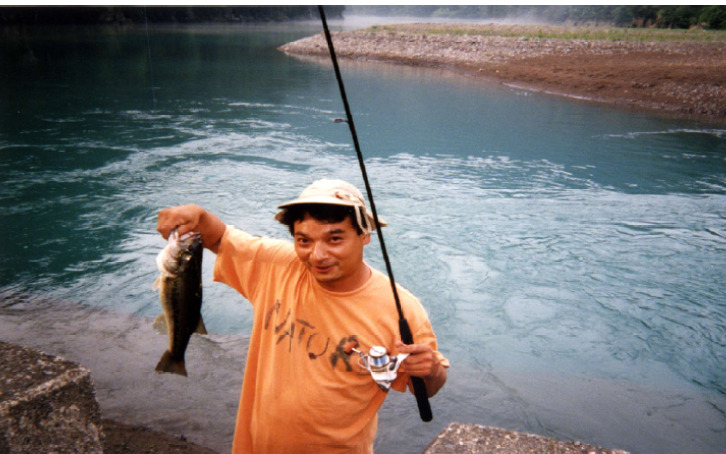
In this case, Ogata’s fingerprints and a cigarette butt with his DNA were left at the crime scene, which establishes that Ogata was at the store. Therefore, we must clarify Ogata’s alibi on the day of the incident; but unfortunately, Ogata was arrested about two years after the crime, and it is unlikely that an ordinary person would accurately remember details about a circumstance that happened nearly two years ago. Based on the little information and memories that remain, we must find evidence to support Ogata’s alibi on that day.
This is a robbery-murder case, and viewing the situation as an ordinary person, it would be natural to assume that the victim was killed out of resentment over financial disputes. But the culprit has remained a mystery for nearly two years since the incident, and the investigation has been difficult, making it virtually impossible to track down the culprit directly. On the other hand, some newspaper articles from that time state that people nearby heard the victim arguing with several men. Based on the evidence that exists today, it is possible that the crime was committed by multiple culprits.
In addition, there were blood splatter marks on the ceiling and the north, east, and south walls of the room at the crime scene, however, if these marks were caused when the murder weapon was raised, the culprit would have attacked the victim while changing angles of about 180 degrees from the victim. The victim was elderly and had a handicap of his left arm, and it is asserted he had drank quite a bit at the time, making it difficult to believe that such an attack was necessary. There is also the question of whether blood splatter marks would have been caused over such a wide area if the crime had been committed by a single culprit.
The defense team is preparing for the first request for retrial. Currently, they are conducting reenactment experiments to discover “new evidence” and examining whether there is anything else that can be appraised, including assessing the testimony evidence.
Ogata is still in prison having been sentenced to life imprisonment. Our legal team will continue to work hard to ensure that Ogata, who has continued to protest his innocence, is given relief as soon as possible.
[Latest] Kobe Pawnshop Case – Appellate Trial
Student Volunteer, Konan University, Kobe Pawnshop Case Symposium Report
Posted May 4, 2025
Thank you for attending the Kobe Pawnshop Case Symposium
Posted April 21, 2025
Kobe Pawnshop Case Symposium “Opening up the future of retrials” to be held! (April 19, 2025)

